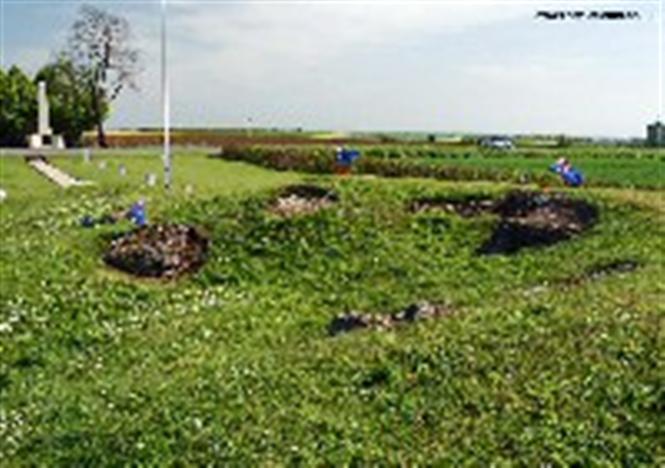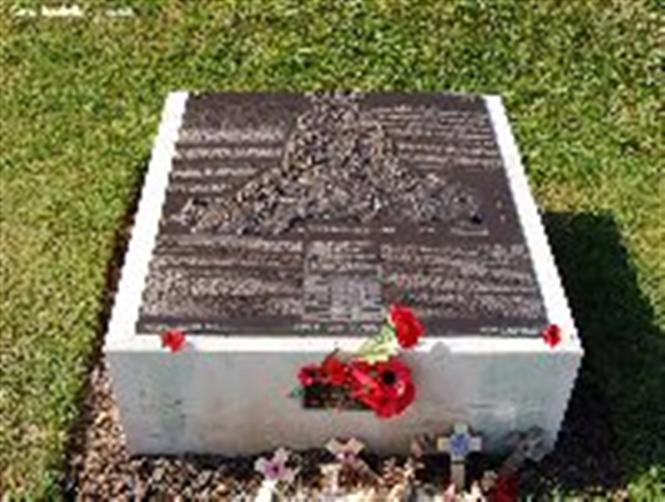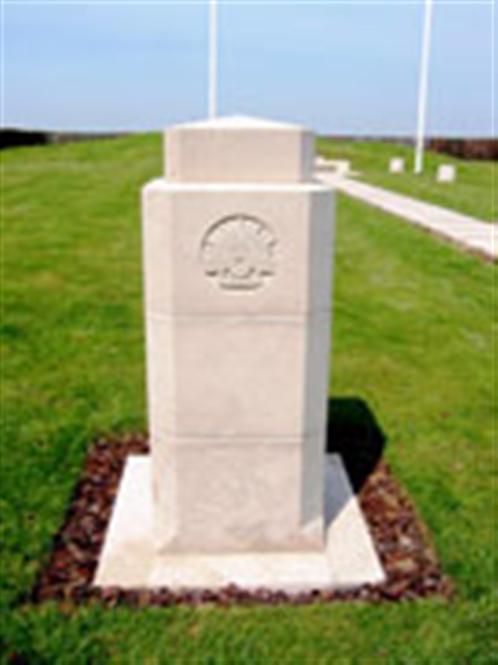Windmill Site, Pozieres
Description
A walkway leads up to a memorial stone bench with an inscription that records the capture of this site on August the 4th, 1916. Behind this is a bronze plaque, arranged by Dr Ross Bastiaan, which gives information about the battle and also has a relief map of the Somme area. Behind the bench and bronze plaque are the concrete remnants, presumably of the German fortifications on the site of the windmill, that can be seen in the uneven ground behind the flags.
History
Though originally dedicated to the 2nd Division, this unusual monument has a national flavour. It is a square of formerly shell-torn ground where the windmill once stood and where so many Australians fought and died. The plaque at the Windmill site reads "The ruin of Pozieres windmill which lies here was the centre of the struggle in this part of the Somme Battlefield in July and August 1916. It was captured on August 4th by Australian troops who fell more thickly on this ridge than on any other battlefield of the war".
The small village of Pozieres is located on a ridge of high ground between Albert and Bapaume, and thus had great strategic importance to both the Allies, who wanted to take it as part of their advance, and the Germans who clung determinedly onto it.
Although the village and ridge was a 1st July objective for the 8th Division, the village was not taken until the 25th of July, and the crest of the ridge not until the 5th of August. The 1st and 2nd Australian Divisions respectively were the units which finally gained those objectives, whilst the Australian 4th Division later took Mouquet Farm, not far from here.
In the fighting at Pozières, around the Windmill and northwards along the ridge towards Mouquet Farm, the AIF suffered more than 23,000 casualties in little more than six weeks, between 23 July and 5 September 1916. Of these casualties, nearly 7,000 were killed, had died of wounds or were ‘missing’.
Construction Information
No information available at this time.
Location
France.
This site is situated on the northern extremity of Pozieres, on the way Bapaume (D929).




